Amami Ōshima is a beautiful island located in the Kagoshima Prefecture of Japan. The island is known for its lush subtropical forests and rich fauna, including a diverse population of avifauna.
Birds play a crucial role in the island’s ecosystem, serving as both predators and prey and helping to maintain the delicate balance of the ecosystem.
In this article, we will explore the different bird species found in Amami Ōshima, their habitats, and behavior patterns to gain a better understanding of the island’s avian population.
1. White-Backed Woodpecker
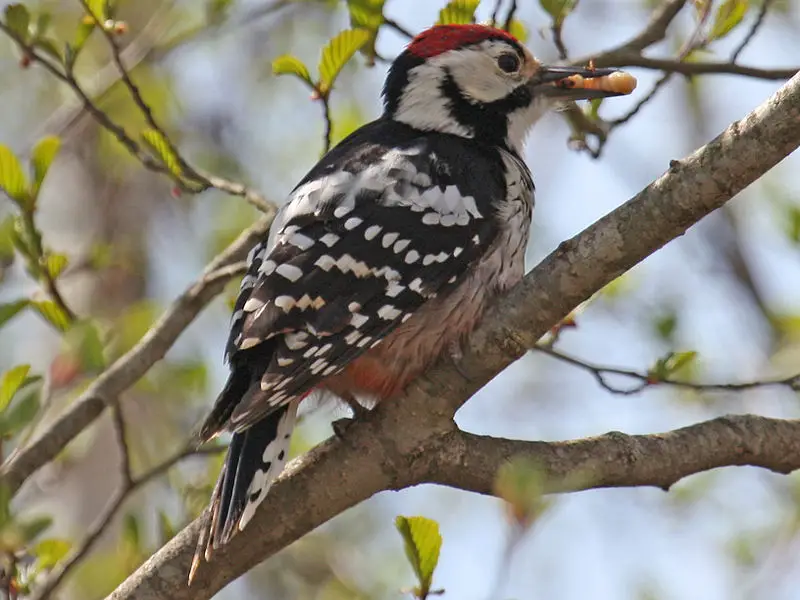
The White-backed Woodpecker is a beautiful bird that can be found in Eurasia. It has white plumage on its back, giving it its name.
Its head and wings are grey with black barring while its breast and belly have red speckles across them.
This species was first described by German naturalist Johann Matthäus Bechstein in 1802 who gave it the scientific binomial of Picus leucotos due to the white colouring along its back from the Greek words “leukos” meaning ‘white’ and “-nōtos” which means ‘backed’.
The type locality for this species is Silesia where these birds are still commonly seen today.Scientific classification:
| Kingdom | Animalia |
| Phylum | Chordata |
| Class | Aves |
| Order | Piciformes |
| Family | Picidae |
| Genus | Dendrocopos |
| Species | D. leucotos |
Also Featured In: Common Birds in Japan, Common Serbian Birds
2. Amami Woodcock
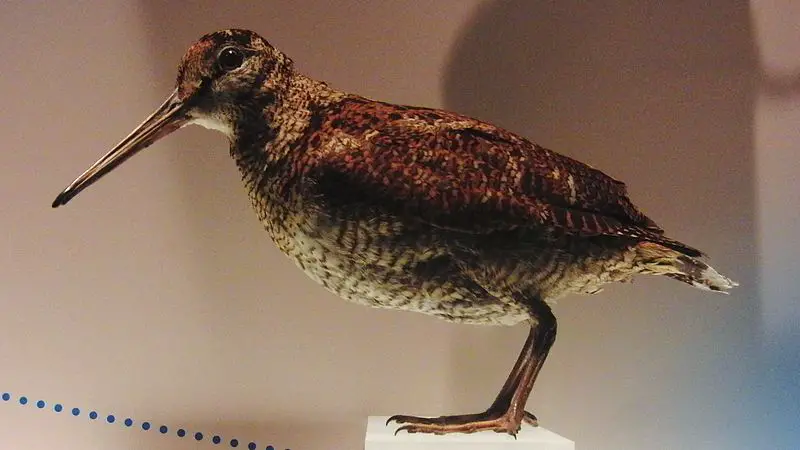
The Amami woodcock is a medium-sized wader, slightly larger and longer legged than its Eurasian cousin. It can only be found in the forests of two small islands off the coast of South Japan known as the Amami Islands chain.
Its habits are similar to that of other woodcocks; it feeds on worms and insects during twilight hours before nesting at night in dense vegetation.
The species was originally described as a separate entity from its Eurasian counterpart due to slight differences, however recent evidence suggests they may actually be conspecific.
As an endemic bird, conservation efforts have been made for this species with limited success due to habitat loss caused by human activities such as logging and development projects within their rangeScientific classification:
| Kingdom | Animalia |
| Phylum | Chordata |
| Class | Aves |
| Order | Charadriiformes |
| Family | Scolopacidae |
| Genus | Scolopax |
| Species | S. mira |
3. Ryukyu Robin
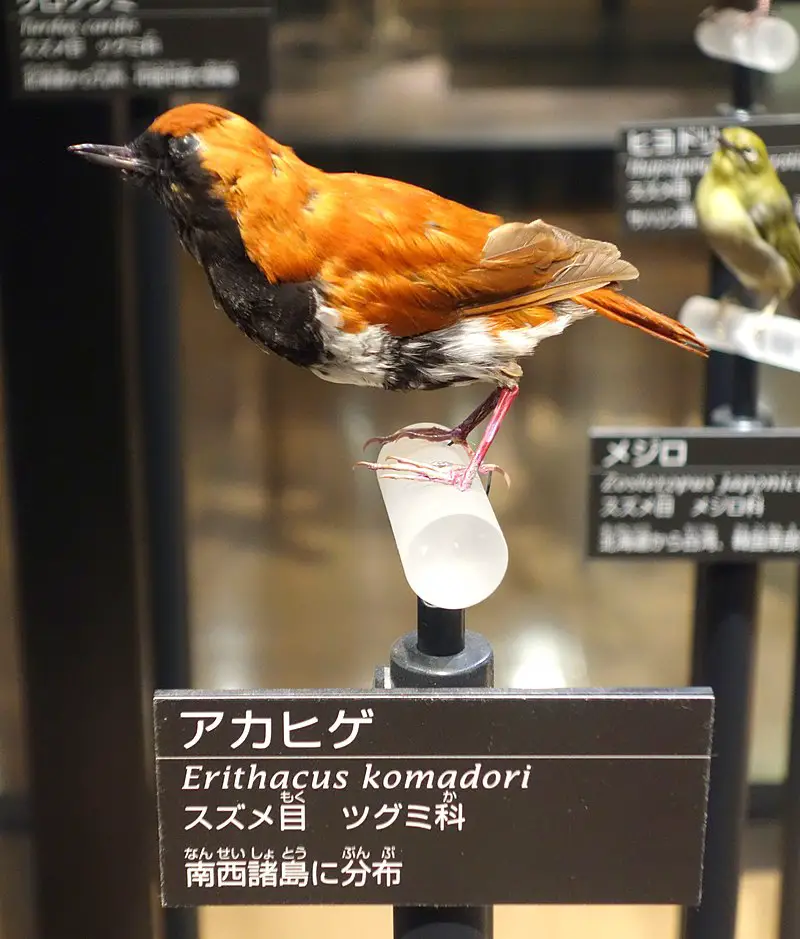
The Ryukyu robin is a small, vibrant bird endemic to the Ryūkyū Islands of Japan. It was formerly considered a subspecies of Okinawa robin (Larvivora namiyei).
The name Komadori originates from its relative – the Japanese Robin in Japanese language. Along with European and Japanese Robins, it was previously placed underthe same genus Larvivora.
These birds are very colourful and beautiful, featuring shades of blue-grey on their back while they have orange-red feathers below along with white patches on their cheeks which give them an adorable look.
They usually feed on insects like caterpillars or grasshoppers found nearby shrubs or bushes for sustenance apart from berries during winters.Scientific classification:
| Kingdom | Animalia |
| Phylum | Chordata |
| Class | Aves |
| Order | Passeriformes |
| Family | Muscicapidae |
| Genus | Larvivora |
| Species | L. komadori |
Also Featured In: Yakushima Island Birds You Should Know,
4. Ryūkyū Scops Owl
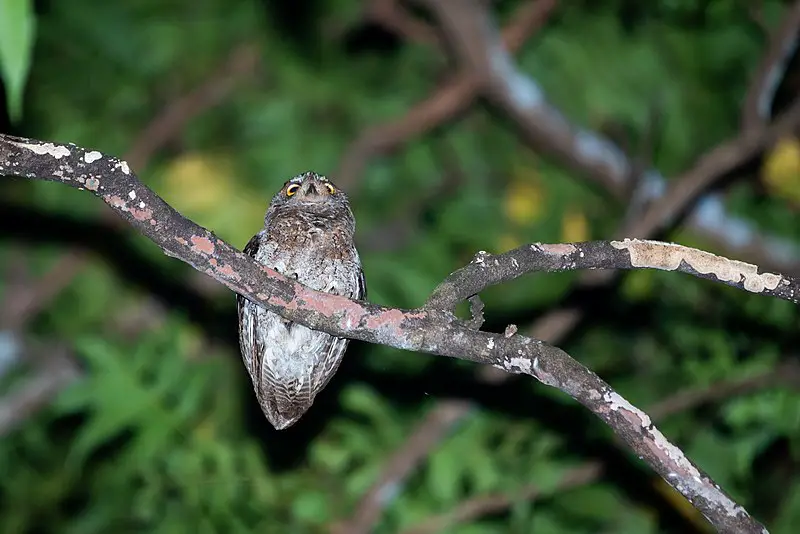
The Ryūkyū scops-owl is a small rufous-brown owl with yellow eyes and an olive gray bill. Its face disk has a cinnamon colored facial ruff, making it quite distinctive from other owls in the area.
Found mainly on islands such as Japan’s Ryukyu Islands, Lanyu Island off south-east Taiwan and the Babuyan Islands of northern Luzon in Philippines, this bird prefers tropical or subtropical evergreen forests for its habitat.
It can be spotted near trees during twilight hours when they come out to hunt insects like moths and beetles.
The species is listed by IUCN as Least Concern due to its wide range of distribution across different island locations.Scientific classification:
| Kingdom | Animalia |
| Phylum | Chordata |
| Class | Aves |
| Order | Strigiformes |
| Family | Strigidae |
| Genus | Otus |
| Species | O. elegans |
Also Featured In: Most Common Taiwan Birds,
5. Japanese Wood Pigeon
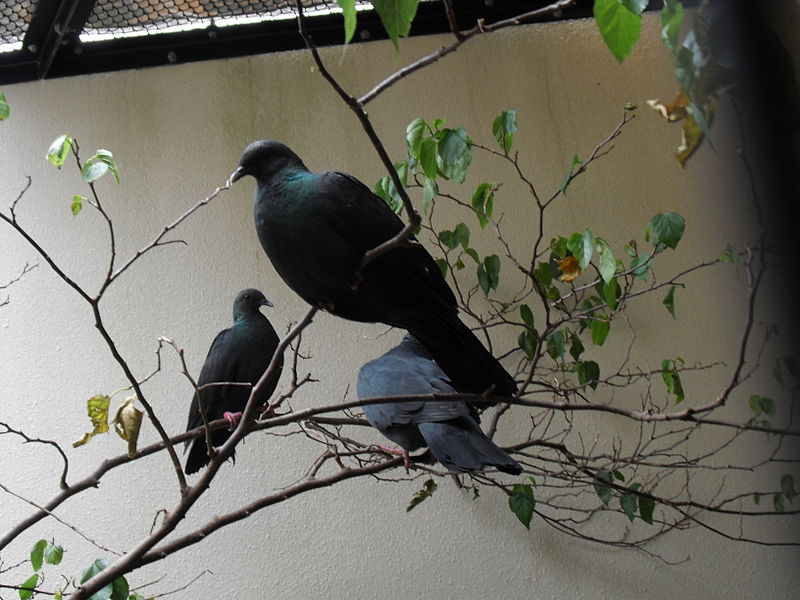
The Japanese wood pigeon is a species of columbid bird found in East Asia. It has an impressive size of 550 grams, and 43 cm long, making it the largest representative of its genus – Columba.
Its natural habitats are temperate forests and subtropical or tropical moist lowland forests near shorelines of the Pacific’s Korea Strait, Philippine Sea and East China Sea.
This beautiful creature has white wings with black tips that gives them a unique look when they take flight.
The male also have purple head feathers while their breast feathers are pinkish-red color which makes them even more attractive to watch out for.
In addition to this stunning beauty, these birds can make loud calls as well as whistles during mating season that you can hear from far away.Scientific classification:
| Kingdom | Animalia |
| Phylum | Chordata |
| Class | Aves |
| Order | Columbiformes |
| Family | Columbidae |
| Genus | Columba |
| Species | C. janthina |
Also Featured In: Coastal Birds That Live around Miyako-jima,
6. Taiwan Green Pigeon
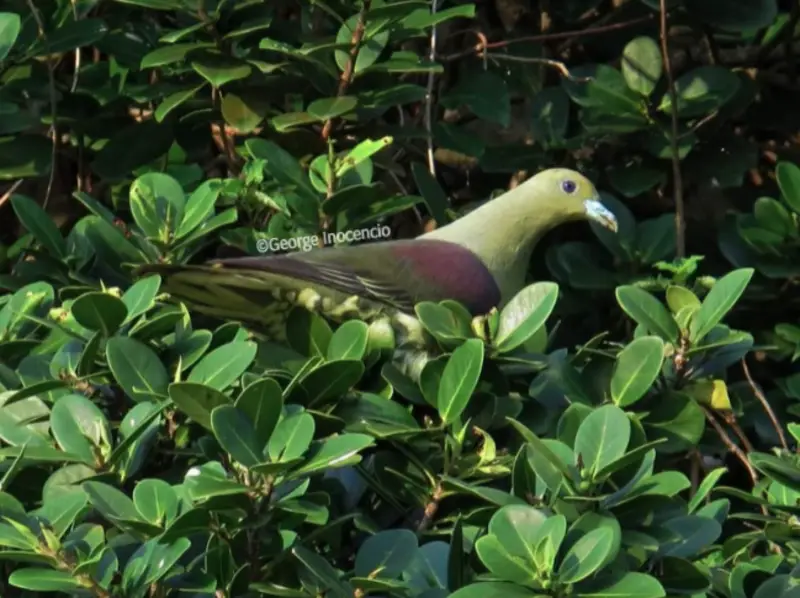
The Taiwan green pigeon is a member of the Columbidae family and was first described by Robert Swinhoe in 1863. It lives in Taiwan and Batanes islands, preferring subtropical or tropical lowland forests and gardens as its habitat.
Unfortunately this species faces threats from human activities such as deforestation which has destroyed much of its natural environment.
The Ryukyu green pigeon (T permagnus) found on Ryuku Islands used to be considered part of the same species but now it’s not so anymore due to differences between them.
This bird usually feeds on fruits, nuts and seeds while nesting among trees where they lay their eggs during breeding season.
They are generally small sized birds with greyish-brown feathers on body parts like wings, head etc., along with metallic colors around neck area giving them an attractive look overall.Scientific classification:
| Kingdom | Animalia |
| Phylum | Chordata |
| Class | Aves |
| Order | Columbiformes |
| Family | Columbidae |
| Genus | Treron |
| Species | T. formosae |
7. Grey-Faced Buzzard
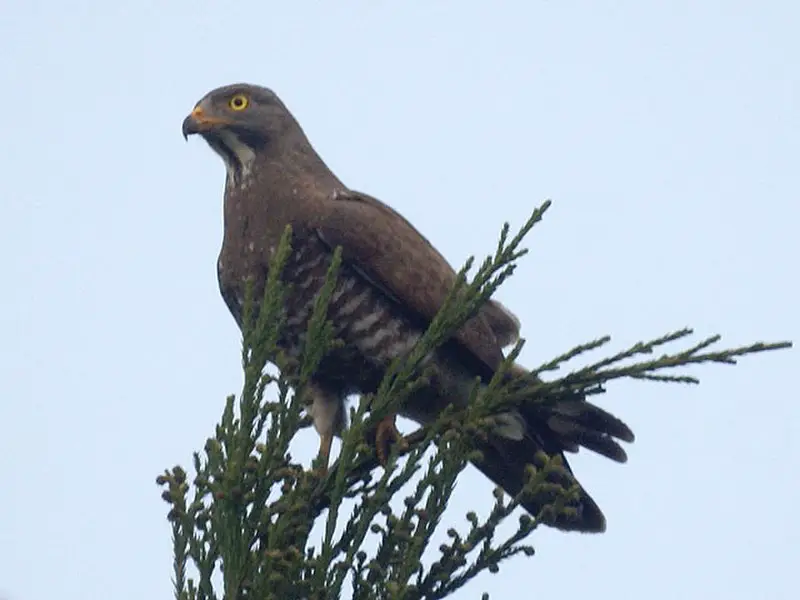
The Grey-faced Buzzard is a small raptor that can be found in Manchuria, Korea, and Japan. It is known for its grey head, neck, and breast, and its white throat.
The adult buzzard also has distinctive black moustaches and mesial stripes, adding to its unique appearance.
This bird of prey feeds on lizards, small mammals, and large insects and can often be seen in open land areas.
During the winter months, the Grey-faced Buzzard can be found in Southeast Asia. Despite its small size, this bird is a formidable predator and an important part of the ecosystem in its native range.Scientific classification:
| Kingdom | Animalia |
| Phylum | Chordata |
| Class | Aves |
| Order | Accipitriformes |
| Family | Accipitridae |
| Genus | Butastur |
| Species | B. indicus |
Also Featured In: Most Common Birds Live in Osaka, Birds of Hyōgo
8. Lidth’s Jay
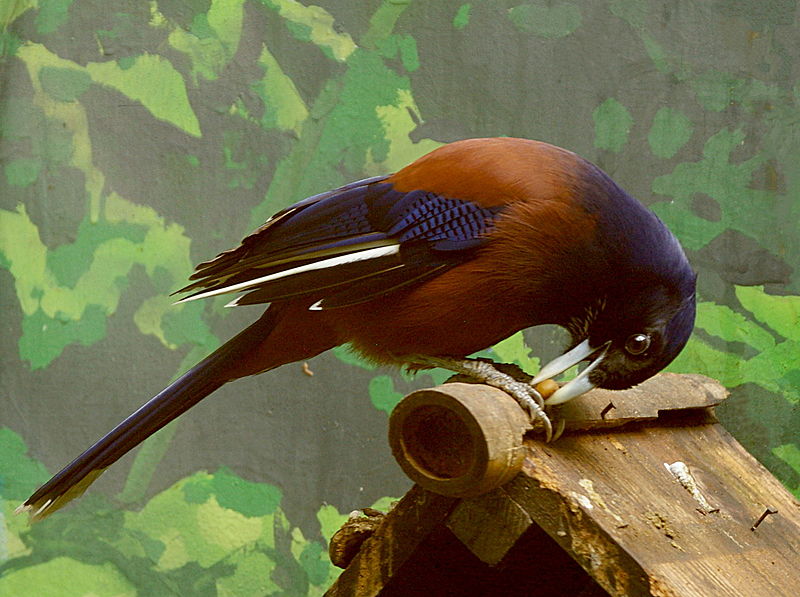
Lidth’s jay, also known as the Amami jay, is a bird belonging to the Corvidae family and is commonly found in Japan. This bird is slightly bigger than its relative Eurasian jay and has a stouter bill and longer tail.
Unlike other jays, Lidth’s jay has no visible crest on its head. The head feathers of this bird are black and velvety, while its shoulders and back have a deep purplish-blue color. These birds can grow up to 38 cm in length.
Lidth’s jay is an omnivorous bird and feeds on both plants and animals. They can be found in various habitats such as forests, gardens, and urban areas.
Unfortunately, these birds are listed as vulnerable, with a decreasing population due to habitat loss and forest fragmentation.
Conservation efforts are needed to protect this beautiful bird.Scientific classification:
| Kingdom | Animalia |
| Phylum | Chordata |
| Class | Aves |
| Order | Passeriformes |
| Family | Corvidae |
| Genus | Garrulus |
| Species | G. lidthi |
9. White’s Thrush
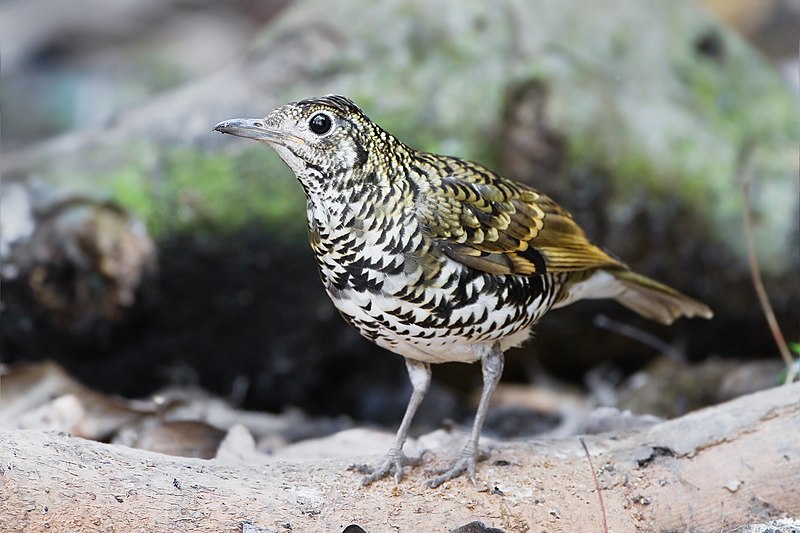
White’s thrush is a species of bird belonging to the thrush family, Turdidae. It was named after the English naturalist Gilbert White. This bird breeds in wet coniferous taiga, primarily in the eastern Palearctic, including Siberia, Manchuria, Korea, and Japan.
Its genus name, Zoothera, comes from the Ancient Greek words for “animal” and “hunter”, while its specific name, aurea, is derived from the Latin word for “golden”.
The bird’s habitat is typically made up of moist forests and tundras where it forages on the ground for insects, worms, and berries.
The bird’s plumage is generally brownish in color, with a golden-yellow chest. The White’s thrush is an important migratory bird that spends its winters in Southeast Asia, specifically in Thailand, Malaysia, and the Philippines.Scientific classification:
| Kingdom | Animalia |
| Phylum | Chordata |
| Class | Aves |
| Order | Passeriformes |
| Family | Turdidae |
| Genus | Zoothera |
| Species | Z. aurea |